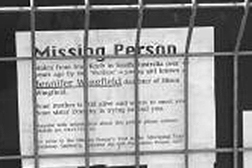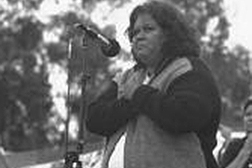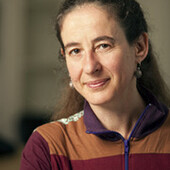You know, I can remember we used to just talk lingo. [In the Home] they used to tell us not to talk that language, that it’s devil’s language. And they’d wash our mouths with soap. We sorta had to sit down with Bible language all the time. So it sorta wiped out all our language that we knew.
—Testimony of an Aboriginal woman forcibly removed from her parents and placed at Umewarra Mission, from the Australian Human Rights Commission’s “National Inquiry into the Separation of Aboriginal and Torres Strait Islander Children from their Families.

Those sitting in the halls of the academy or human rights institutions may find it difficult to define “the right to culture” in pithy terms, but indigenous Australians know what it is all too well. Having been brutally violated by the post-colonial Australian state, the right to culture is no great mystery to the thousands of Aboriginal adults currently living in Australia who have not walked over their ancestral lands, cannot tell their people’s stories or sing their songs, cannot speak their native tongue, and do not know the face of their own mother. As one Aboriginal woman of the “stolen generation” (as they have come to be known) told the National Inquiry: “I got told my Aboriginality when I got whipped and they’d say, ‘You Abo, you nigger.’ That was the only time I got told my Aboriginality.”
We can begin to capture the meaning of a right to culture by tracing the spaces where cultural identity has been hollowed out. Aboriginal Australians, who today are deftly using the resources of international and domestic law, the media, and the economic marketplace to regain their cultural rights, conduct their fight against an historical background of systematic state-sponsored abuse. For the first seventy-plus years of the twentieth century, eradicating Aboriginal culture, more benignly known as “assimilation,” was Australian government policy. Paul Hasluck, the most infamous Minister for Native Affairs, summarized the policy when he wrote in the early 1950s: “Assimilation means, in practical terms, that, in the course of time, it is expected that all persons of aboriginal [sic] blood or mixed blood in Australia will live like other white Australians do.”
 Like culture itself, this policy of cultural eradication did not exist as some abstract set of ideas but was played out on the bodies of Aboriginal people, and most powerfully the bodies of Aboriginal children. Australian policy makers, like their U.S. and Canadian counterparts, recognized that the life of a culture depends on its transmission across generations. As such, breaking the connection between parents (and communities) and children was the shortest route to killing their culture. While records are imprecise, the Commission’s report indicates that from 1910 to 1970 between one in three and one in ten Aboriginal children were forcibly taken from their families, transported across the vast continent, and placed in state or church run institutions, or with white foster or adoptive parents. Contact with their original families was forbidden, and they were often punished for speaking with their siblings in their mother tongue. Most were not even told that they were Aboriginal.
Like culture itself, this policy of cultural eradication did not exist as some abstract set of ideas but was played out on the bodies of Aboriginal people, and most powerfully the bodies of Aboriginal children. Australian policy makers, like their U.S. and Canadian counterparts, recognized that the life of a culture depends on its transmission across generations. As such, breaking the connection between parents (and communities) and children was the shortest route to killing their culture. While records are imprecise, the Commission’s report indicates that from 1910 to 1970 between one in three and one in ten Aboriginal children were forcibly taken from their families, transported across the vast continent, and placed in state or church run institutions, or with white foster or adoptive parents. Contact with their original families was forbidden, and they were often punished for speaking with their siblings in their mother tongue. Most were not even told that they were Aboriginal.
Aboriginality, either as they lived it in their own bodies or as they saw it in the relatives seeking them out (but with whom contact was refused), was the object of derision. As one woman recalled:
We were playing in the schoolyard and this old black man came to the fence. I could hear him singing out to me and my sister. I said: ‘Don’t go. There’s a black man’. And we took off. It was two years ago I found out that was my grandfather. He came looking for us. I don’t know when I ever stopped being frightened of Aboriginal people. I don’t know when I realized I was Aboriginal. It’s been a long hard fight for me.
That long hard fight, which until recently almost all members of the stolen generation have waged alone, marks the attempt of the Aboriginal people to recapture their connection with their cultural identity. Aware now of the world into which they were born, that their own life had been a node in an intricate kinship among people, land, animals, plants, celestial bodies, and ancestral beings, this loss cannot be repaired. And because culture only exists through the lived experience of actual people, Aboriginal culture has itself been the victim of this process of removal.
Of course, this was the whole point of the policy. The Australian state, established as an independent federation in 1901, was constituted on the ground of other preexisting indigenous nations, which mapped the land with their own systems of governance, laws, and other forms of social organization. In order to claim political and legal legitimacy, the post-colonial Australian state had to adopt the pretence that none of this existed—that the continent was, to use the legal term, terra nullius, empty land. When Aboriginal people spoke their languages, passed their land rights down the generations according to indigenous law, or dealt out legal remedies for breaches of customary law, they were giving testament to the fiction of the modern state’s claim to absolute sovereignty.
In this sense, the common view that the damage to Aboriginal cultures (languages, kinships, social relations, land rights, etc.) was the unavoidable collateral damage caused by the populations of colonial and post-colonial states simply exercising their cultural preferences, represents a failure to recognize the cultural implications of assertions of sovereignty. Like the denial of land rights, the removal of children and all that went with it was one means of securing the untrammeled political, legal, and economic claims of the post-colonial Australian state.
Here one can clearly see the intrinsic connection between cultural rights and the full range of other human rights—civil, political, social, and economic—as affirmed at the 1993 World Conference on Human Rights in Vienna. Culture is not a set of optional practices tacked onto a set of individuals who would otherwise enjoy the full range of human rights. It is the organizing network within which those rights are held. For those of us whose cultures have not been systematically undermined, this intimate link is invisible, or taken for granted. It comes into relief only when the culture, the sovereign claims, the economic resources, and the legal rights of a group are simultaneously and inter-dependently violated.
This cultural integrity is of course something that Aboriginal peoples know from the inside—and not only through violation, but also in the fabric of their lives. This is the other side of this story: the cultural renaissance that Aboriginal peoples are creating for themselves, and their reinvigorated claims for political and economic rights. Just as the removal of children and the decimation of communities atomized Aboriginal peoples and undermined their capacity to make more comprehensive claims, so too their reconnection to community and to the web of culture provides the ground for pressing forward with such claims. In both domestic and international forums, indigenous peoples are making a new type of human rights claim—one that goes beyond the dominant view that culture is a less important right than other rights. Instead, their cultural rights claim is closely tied into the more substantive rights to land and material resources, and of course the right that provokes the greatest hostility from nation states: self determination. It is as though history is being played in reverse: Asserting the right to indigenous cultures is now paving the road to the reintegration of viable political and economic communities, and training the eyes of the international community on the Aboriginal worlds that lie beneath the map that colonial powers pasted over the globe.
Photos courtesy of the National Library of Australia.
